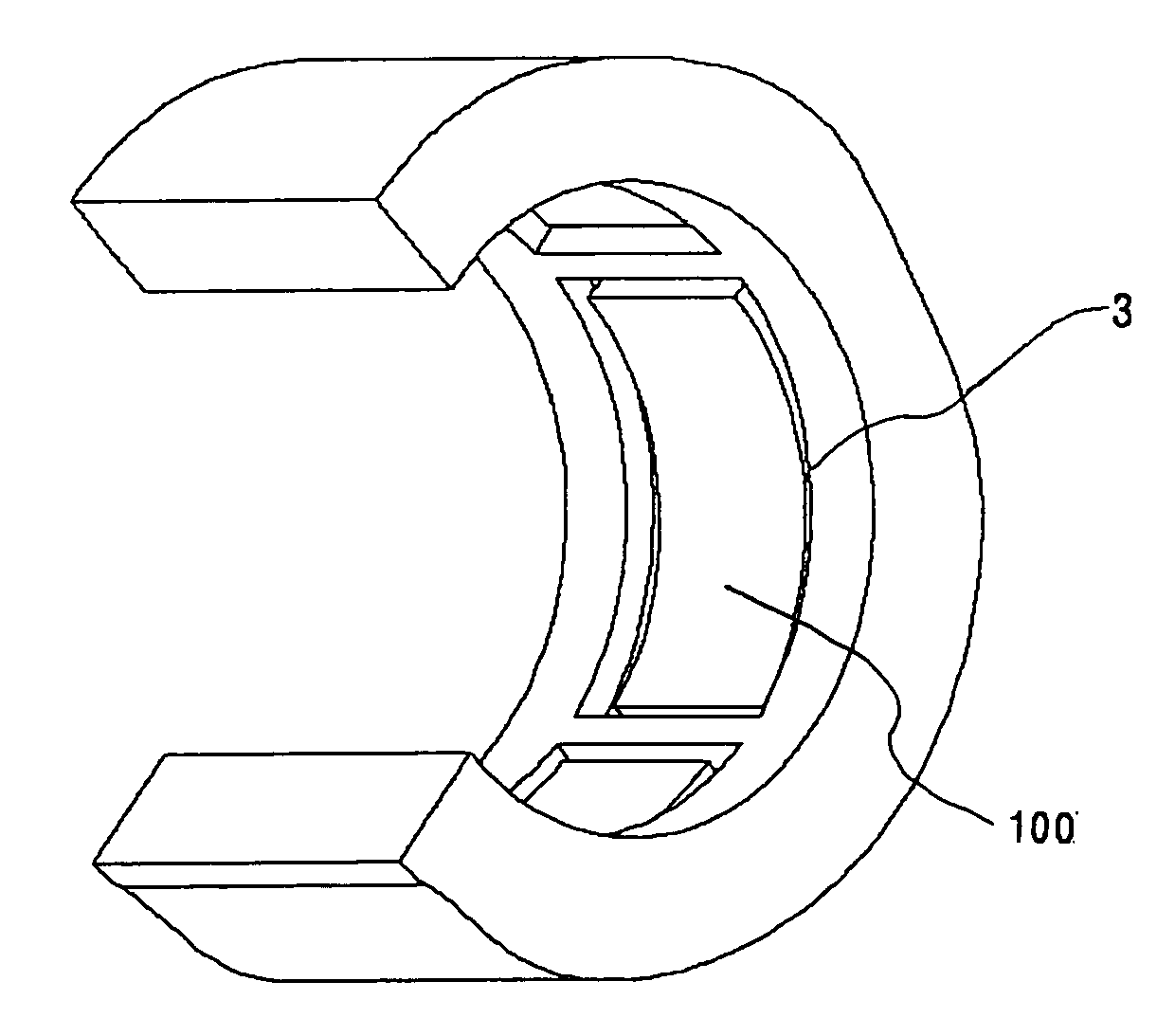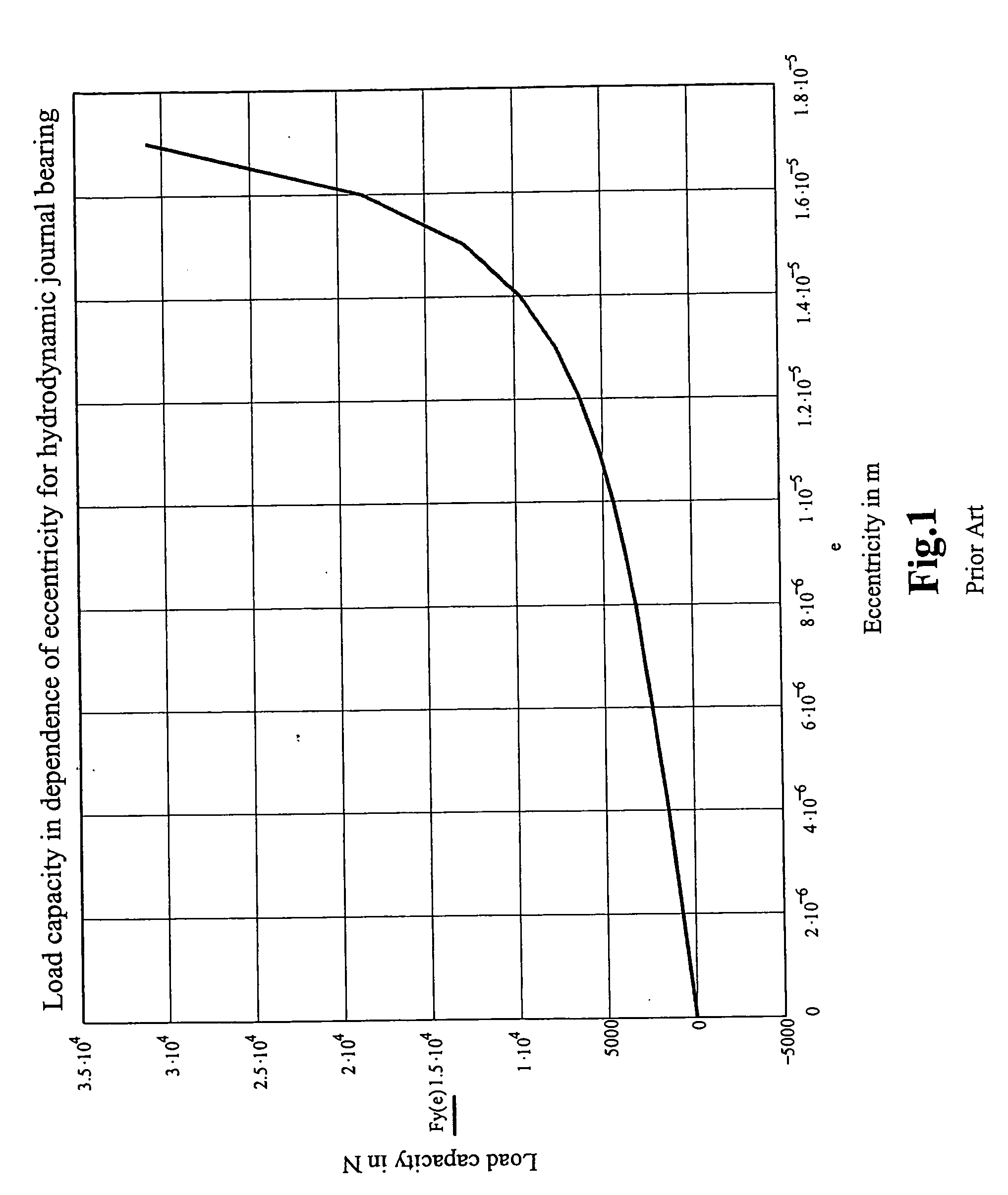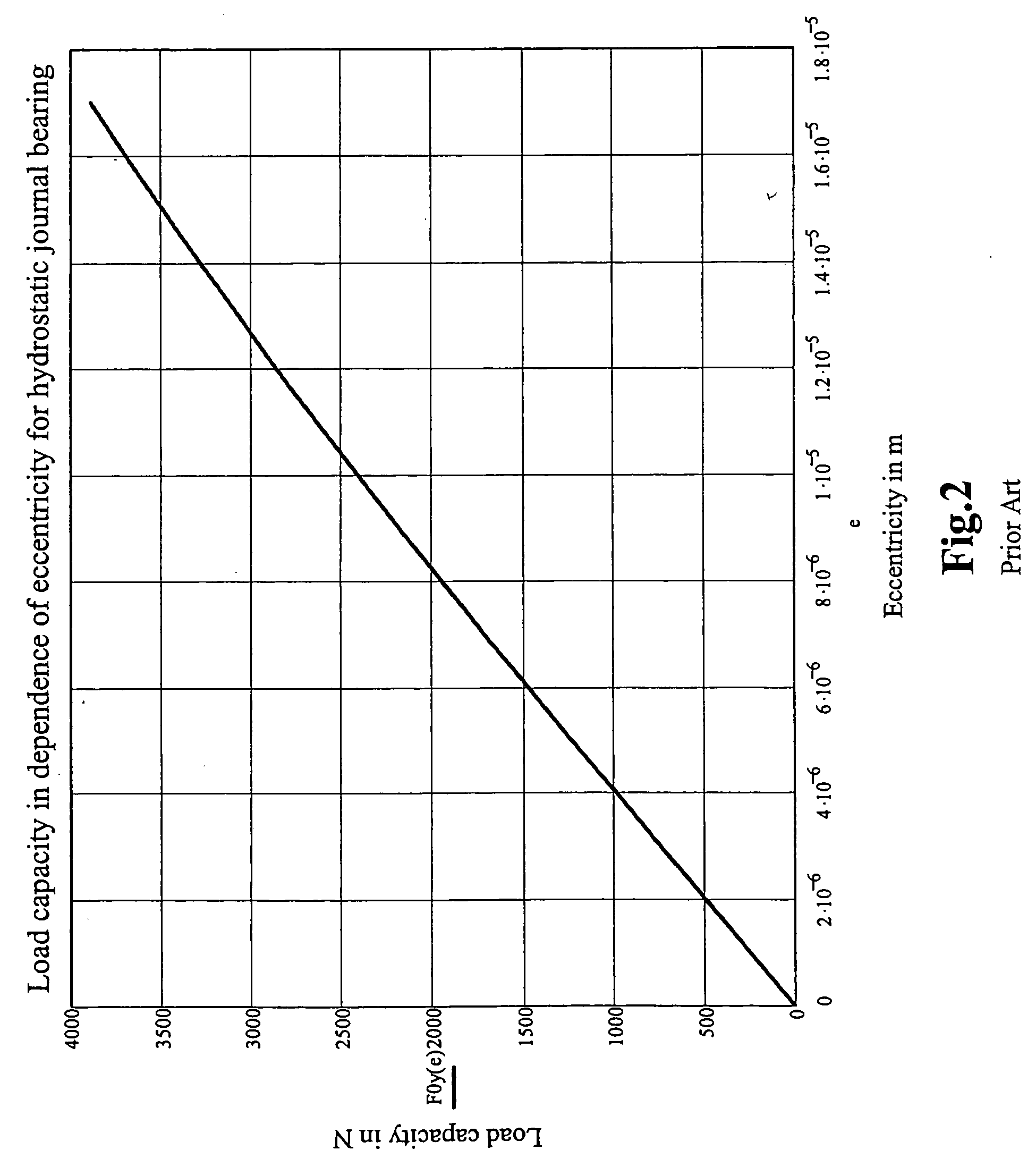Hybrid hydro (air) static multi-recess journal bearing
a static journal bearing and hydrostatic journal technology, applied in the direction of bearings, shafts and bearings, rotary bearings, etc., can solve the problems of increasing the heat generation of the bearing in operation, the bearing type cannot be applied to high speed use, and the bearing type has relatively low stiffness and a low damping ratio, so as to reduce friction power, high speed, and simple manufacturing
- Summary
- Abstract
- Description
- Claims
- Application Information
AI Technical Summary
Benefits of technology
Problems solved by technology
Method used
Image
Examples
first embodiment
[0034]FIGS. 5-6 show a bearing having a bearing housing 1. FIG. 5 shows an isometric view of a bearing showing a recess 3 and FIG. 6 shows a cross-sectional view of the bearing in a plane perpendicular to both the rotational axis O′ of a shaft 2 and the geometrical axis O of the bearing housing 1 opening. When the axis O′ of shaft 2 and the geometrical axis O of bearing housing 1 coincide, the shaft 2 is in the central position. In this embodiment, as shown in FIG. 6, shaft 2 rotates in the direction shown by the arrow. Bearing housing 1 has four recesses 3a-3d. The four recesses 3a-3d are shown for descriptive purposes only. The actual number of recesses can be any number equal to or greater than three. Each recess 3a-3d has a surface 7 defining the bottom of the recess 3. The inclined surfaces 7 each creates a variable gap between the surface 7 and the outer surface of the shaft 2. That is, if the shaft 2 is in the central position, the gap areas defined between the surfaces 7 of ...
third embodiment
[0041]FIGS. 8-9 show a In this embodiment, each recess in the hydrostatic journal bearing contains an island 100 in the middle of the recess 3. Each island 100 is surrounded by a corresponding one of grooves 10a-10d. Each island 100 includes an elevated and inclined surface 11 that forms a variable gap with the outer surface of the shaft 2. That is, if the shaft 2 is in the central position, the gap areas defined between the surfaces 11 of the islands 100 and the outer surface of shaft 2 have widths, as measured along the radial direction from the axis O of the bearing housing 1, that decrease in the direction of rotation of the shaft 2. The variable gaps defined by the islands 100 and the shaft 2 generate hydrodynamic forces. For every recess, oil (represent by the arrow 9) is supplied from an external hydraulic power unit through the inlet restrictors 5 to a groove surrounding the said elevated internal portion of the recess.
[0042]From the pump of the external hydraulic power uni...
PUM
 Login to View More
Login to View More Abstract
Description
Claims
Application Information
 Login to View More
Login to View More - R&D
- Intellectual Property
- Life Sciences
- Materials
- Tech Scout
- Unparalleled Data Quality
- Higher Quality Content
- 60% Fewer Hallucinations
Browse by: Latest US Patents, China's latest patents, Technical Efficacy Thesaurus, Application Domain, Technology Topic, Popular Technical Reports.
© 2025 PatSnap. All rights reserved.Legal|Privacy policy|Modern Slavery Act Transparency Statement|Sitemap|About US| Contact US: help@patsnap.com



